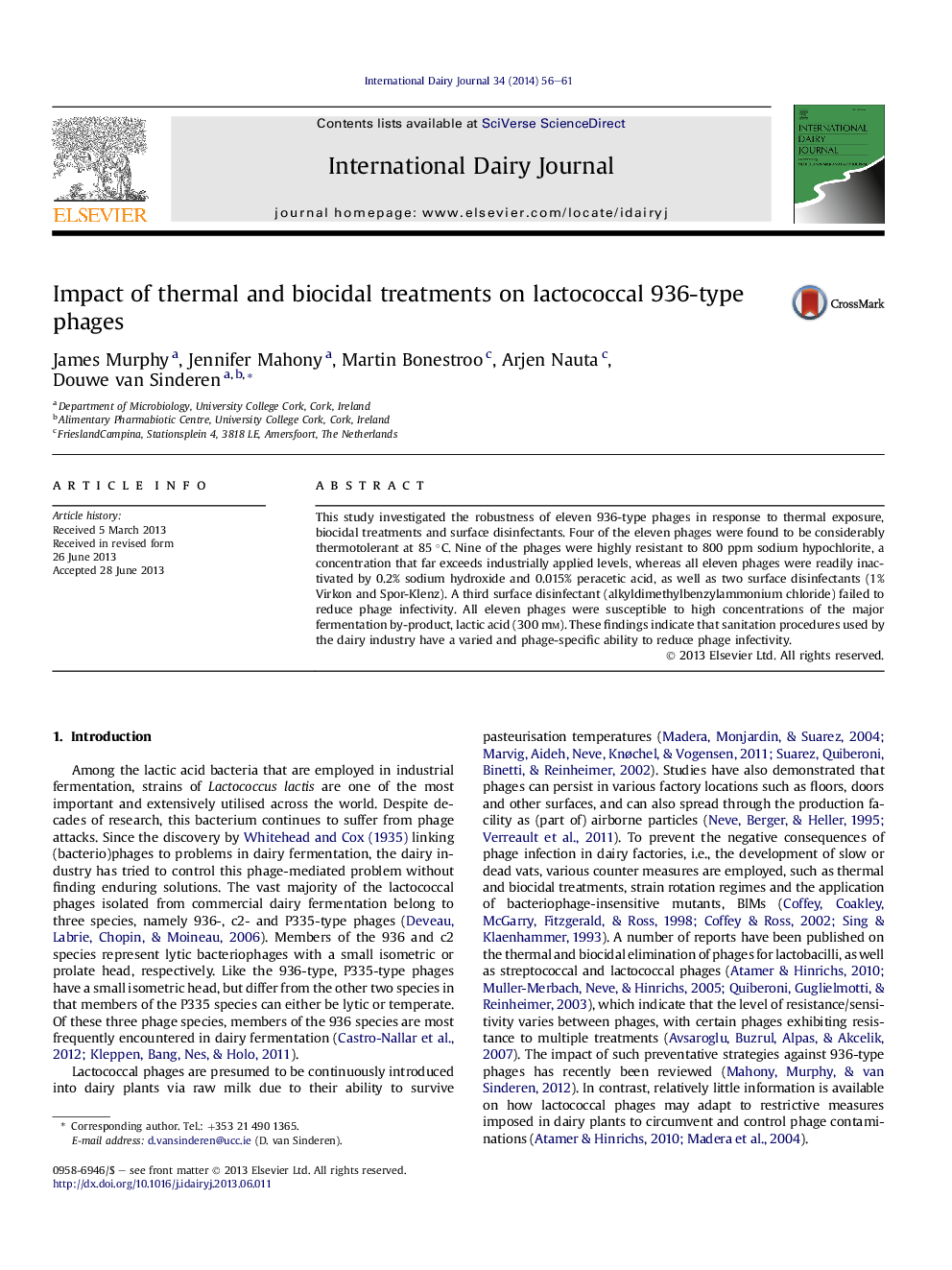| Article ID | Journal | Published Year | Pages | File Type |
|---|---|---|---|---|
| 2434478 | International Dairy Journal | 2014 | 6 Pages |
This study investigated the robustness of eleven 936-type phages in response to thermal exposure, biocidal treatments and surface disinfectants. Four of the eleven phages were found to be considerably thermotolerant at 85 °C. Nine of the phages were highly resistant to 800 ppm sodium hypochlorite, a concentration that far exceeds industrially applied levels, whereas all eleven phages were readily inactivated by 0.2% sodium hydroxide and 0.015% peracetic acid, as well as two surface disinfectants (1% Virkon and Spor-Klenz). A third surface disinfectant (alkyldimethylbenzylammonium chloride) failed to reduce phage infectivity. All eleven phages were susceptible to high concentrations of the major fermentation by-product, lactic acid (300 mm). These findings indicate that sanitation procedures used by the dairy industry have a varied and phage-specific ability to reduce phage infectivity.
